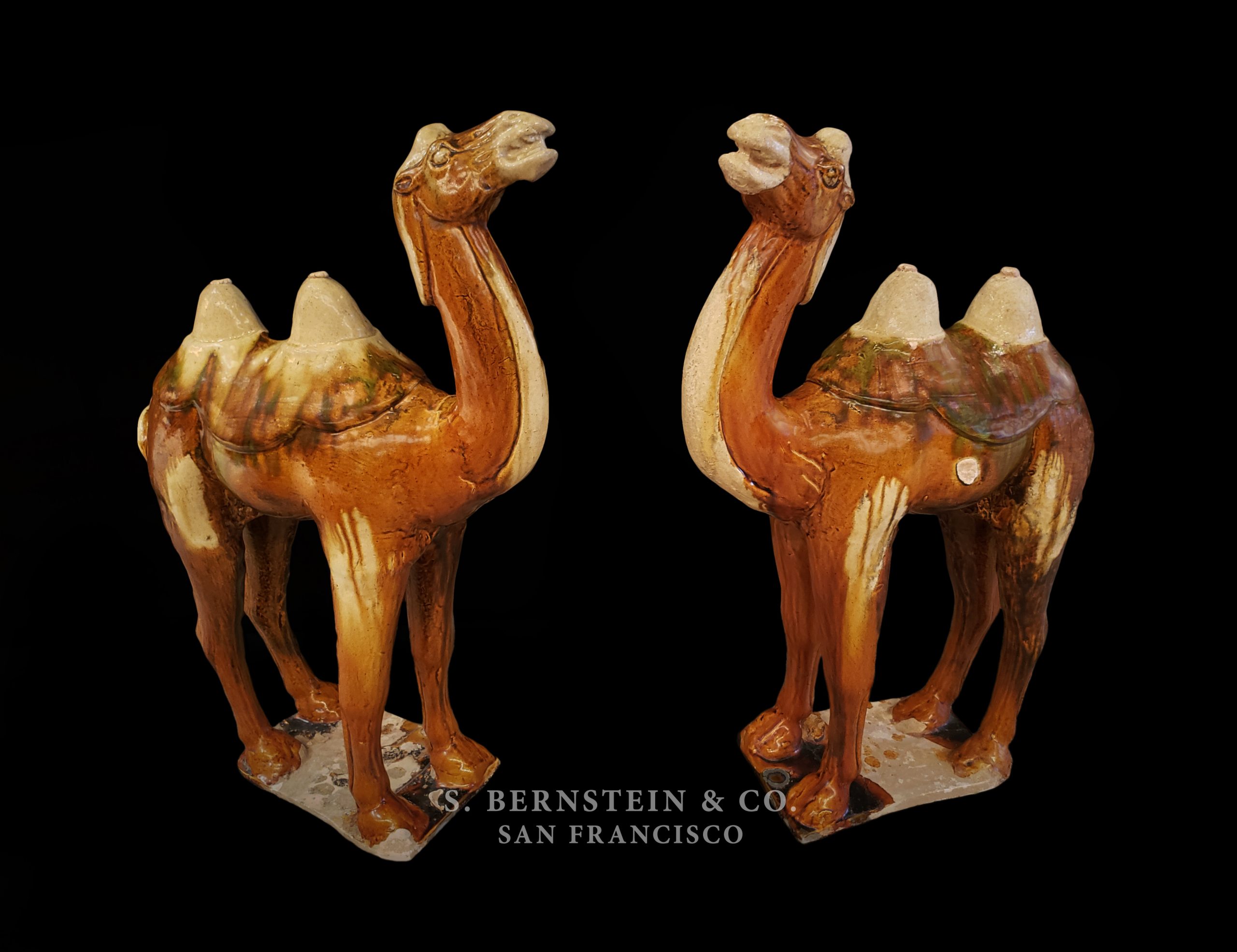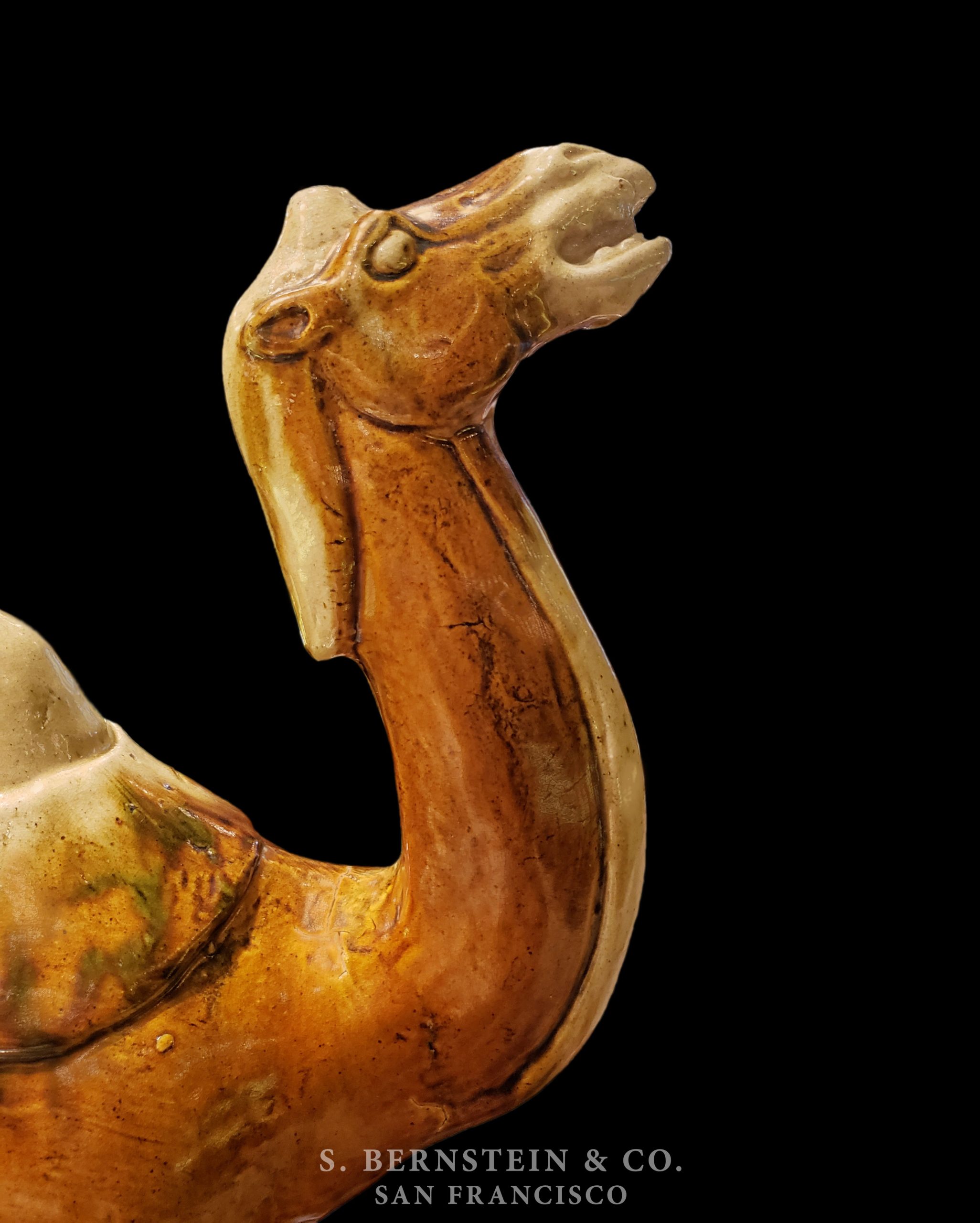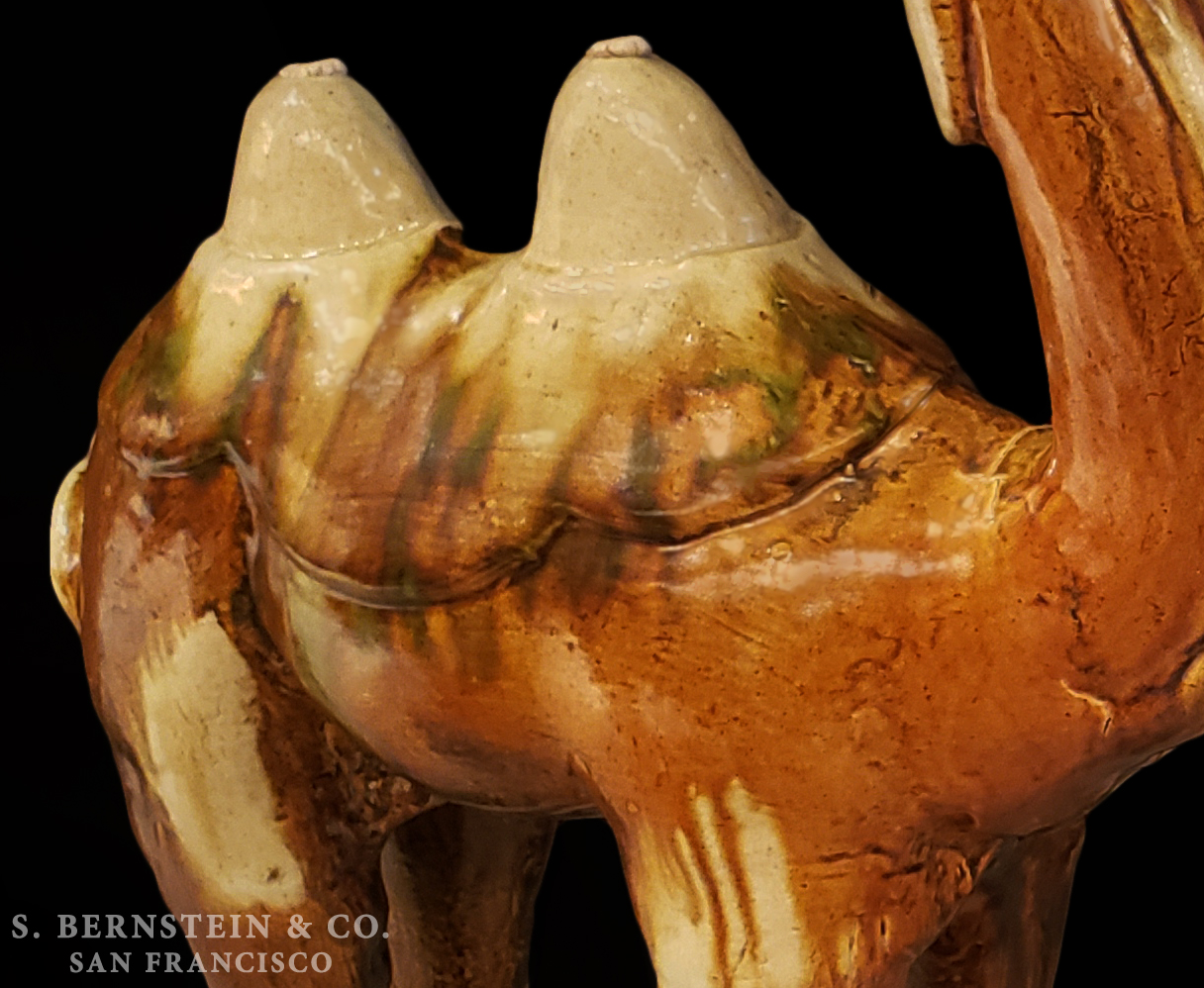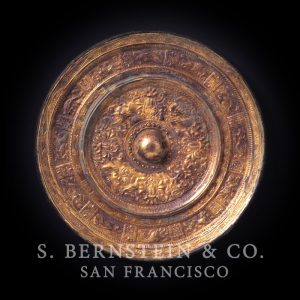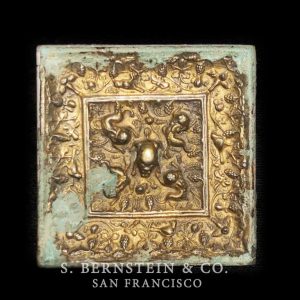Description
During the Tang period, the camel symbolized commerce and its associated wealth. Extensive trade along the Silk Road through Central Asia brought prosperity, foreign envoys, and exotic merchandise to China. This route consisted of a series of destinations forming a highway that stretched from Antioch in the west to Guangzhou in the east. Difficult terrain and a variety of weather conditions made the camel an ideal carrier of goods. These exotic animals were a common sight in the cosmopolitan cities of Tang China, and from the sixth to mid-eighth centuries, works of art depicting the camel became increasingly prevalent as business along the Silk Road continued to thrive. Camels were extremely popular as subjects in furnishing ancestral dwellings as they reflected the predominant taste of the period.
The Tang period saw an artistic renaissance, which is especially reflected in ceramic objects. These included improvements on existing polychrome glazing techniques begun during the Han period (206 BC-AD 220), expanding the spectrum of colors, and creating a less harmful lead glaze. Translated, the Tang variation of glazing, sancai, means three colors; however, a Tang artisan was able to choose from a wider palette than the name indicates; green, yellow, amber, brown, purple, white, and blue were all possibilities. Each color was the result of the absence or addition of iron, copper or cobalt to the lead base.
This magnificent pair of ceramic camels stand approximately 25 inches tall. The camels head’s are held high in a realistic manner. In our opinion, these magnificent camels represent the superb quality of stylistic design and workmanship of Tang Dynasty ceramic art.
Together with Oxford Thermoluminescence Report C199r28
Note: There are repairs to the legs and body as usual. There is a minor chip to the edge of the base of one of the camels.
Reference number: 4167

